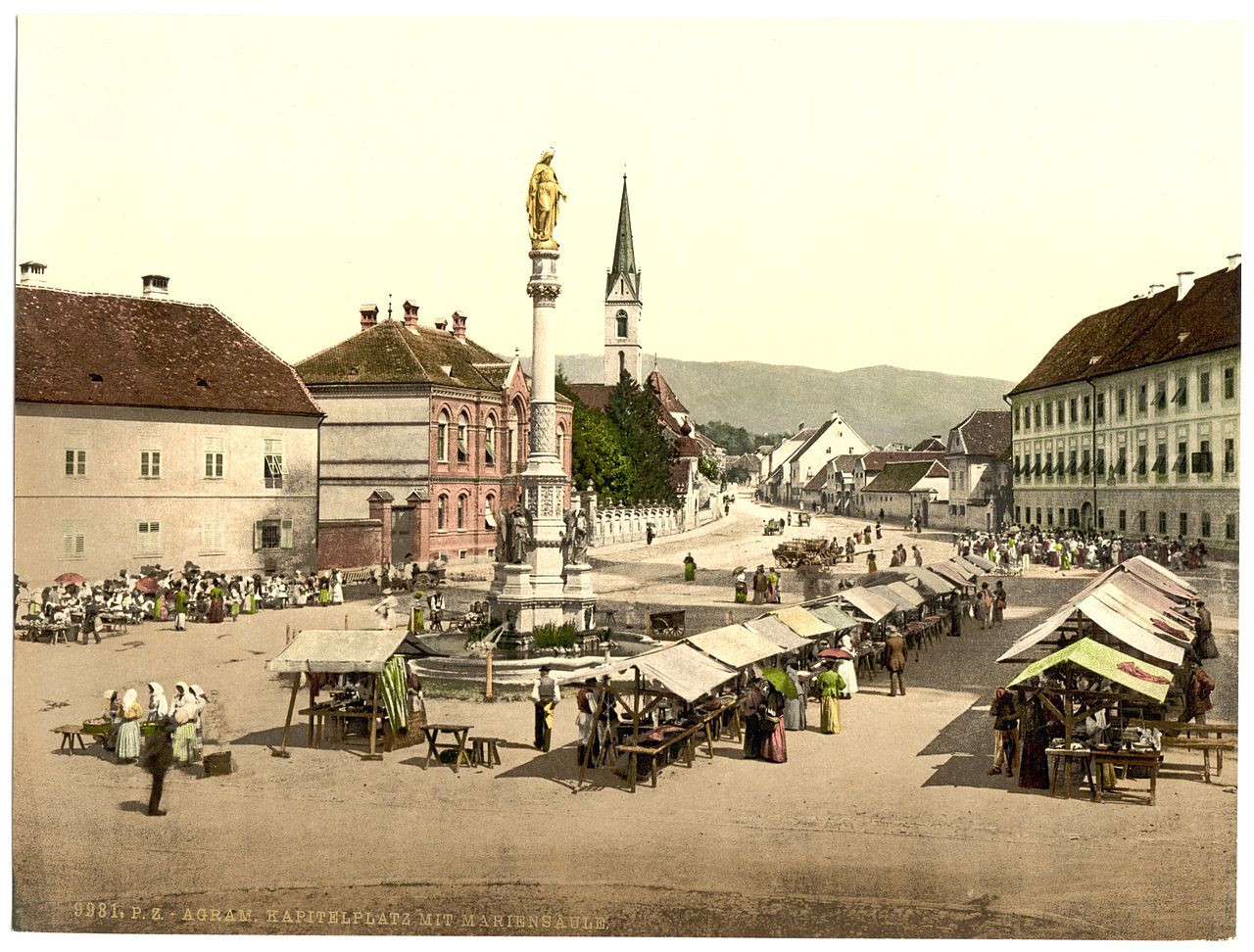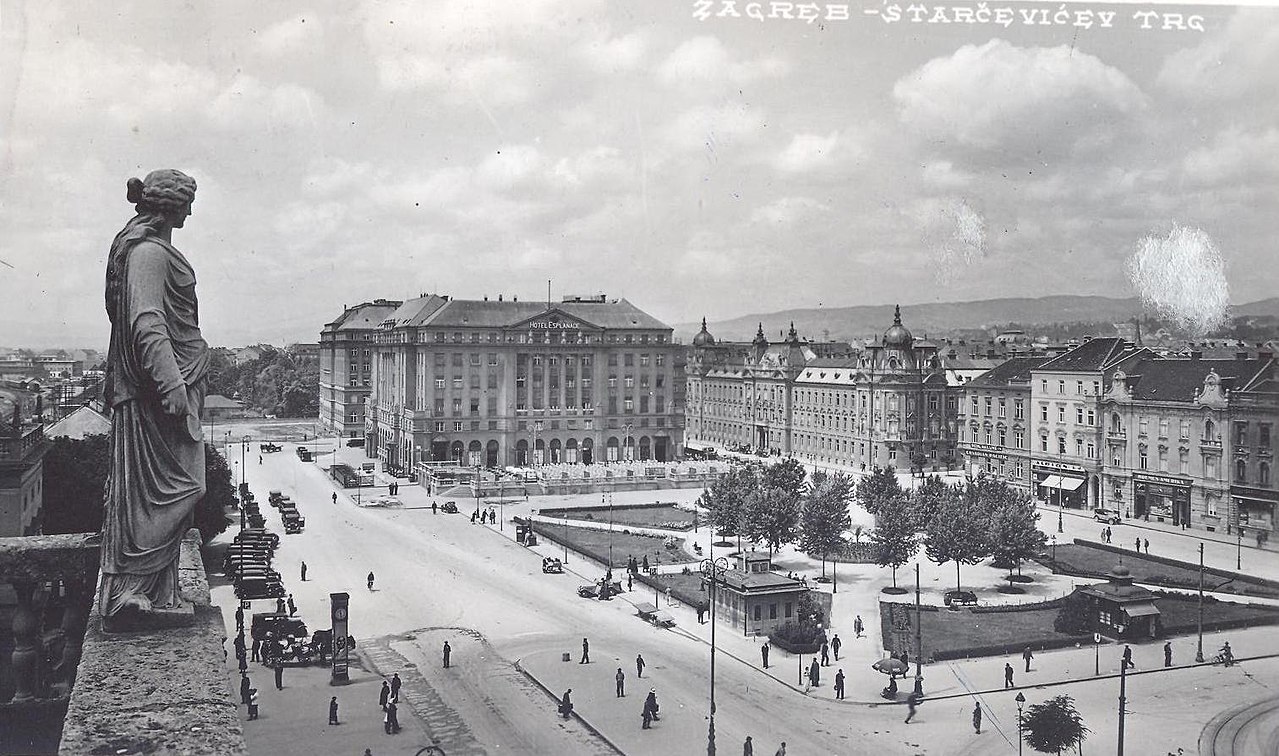ZAGREB, September 21, 2020 - Residents and visitors to the Croatian capital will tomorrow learn how Zagreb street life was historically, as the city centre banishes almost all vehicles for European Car Free Day
What would Zagreb's residents of the past think of the city if they saw it today? The Croatian capital's boundaries now extend many kilometres into the surroundings, the huge Sava river is no longer any impediment to travel. The people of the city now live on both sides. Skyscrapers score the sky and well over half a million people can be seen on its streets, roads and highways.
Apart from the size and the unfamiliar building materials, the biggest shock would probably be the speed of the city. Buses and cars race down multiple-lane avenues and trams take you into almost every neighbourhood you'd want to visit. Kaptol, Zagreb in 1905, when almost every day looked like European Car Free Day
Kaptol, Zagreb in 1905, when almost every day looked like European Car Free Day
Tomorrow, Zagreb will return to a pace more familiar to former inhabitants as the city observes European Car Free Day. Motor vehicles will be banned from much of the city's centre between 8 am and 8 pm.
The area of the city centre observing European Car Free Day has the following boundaries; Trg bana Josipa Jelačića - Jurišićeva - Palmotićeva (western edge) - Boškovićeva (northern edge) - Hebrangova (northern edge) - Gundulićeva (eastern edge) - Ilica (northern edge) - Mesnička (eastern edge to Streljačka) - Mesnička - Demetrova - Ilirski trg - Radićeva - Trg bana Josipa Jelačića.
These streets form some of the oldest parts of Zagreb. Long have they been trodden by the pedestrians to whom they'll return tomorrow. Those travelling into the centre by car must park on the outskirts and take public transport into the heart of the city. Trams, taxis and buses will operate as normal. Cars began to be seen more regularly in Zagreb during the first half of the 20th-century. Not so much a European Car Free Day as a Croatian Tram Free Day - the city's famous tram network wasn't nearly so developed back then. The first city in Croatia to have trams was actually Osijek, who introduced a horse-pulled tram network in 1884.
Cars began to be seen more regularly in Zagreb during the first half of the 20th-century. Not so much a European Car Free Day as a Croatian Tram Free Day - the city's famous tram network wasn't nearly so developed back then. The first city in Croatia to have trams was actually Osijek, who introduced a horse-pulled tram network in 1884.
The observance of car-free days is actually over 65 years old, although originally they were introduced in response to oil crises, not for environmental reasons. The more modern reason for having such days is to return city streets to pedestrians. Car-free days have taken place independently in European nations since the mid-1990s, and it 2000 they became aligned on the fixed date of 22 September. European Car Free Day is also a car-free day in many other countries outside of Europe, although this continent is the only one to currently observe it throughout its boundaries.
All uncredited photos lie within the public domain.
For the latest travel info, bookmark our main travel info article, which is updated daily.
Read the Croatian Travel Update in your language - now available in 24 languages


